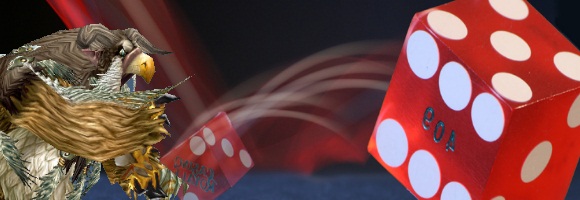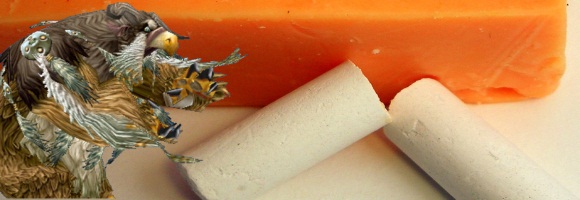There are a lot of folks out there that think being in charge, or in a leadership role, of a guild is a big fun thing. You get to set permissions, invite, kick and all that other cool stuff! Truth is, at least for me, it’s another job. Being in charge means that, like at every other job, you are responsible for those beneath you and how they perform. On top of that you become involved in the day to day running of something larger than yourself. This is especially true if you are among the leadership of a raiding guild.
After leaving Unpossible after 5 long years, I had put the officer mantle in the laundry bin to be cleaned pressed and put under glass. Circumstances did not allow me to leave the mantle alone for long, and I find myself in a leadership role again. Over the last two tiers I’ve had a lot on my plate between being in game, my podcast For The Lore, still consistently writing for WoW Insider, and also writing a novel that I’m submitting for publication consideration in the following weeks. On top of various other personal things, it’s been a hell of a long year and I find myself with an over abundance of ideas on the topic of leadership in a raiding guild. So, bear with me here, because I’m about to dump my thoughts a little.
The burden
The wear and tear
The hard choices
Truthfully it wears on you over time. You have to make a lot of hard decisions that are not always easy, and certainly aren’t popular with everyone. Lets take on the topic of friendship in real life, and raiding in game. I’ve talked about it before, but it’s something that keeps rearing it’s ugly head over and over again. Being someone’s friend does not make you immune from being included in those hard choices a competitive raiding guild faces. This includes officers and the rank-and-file of the raid team. Sometimes, you have to look at someone’s performance, and if found wanting must bench them or otherwise remove them from a fight or raid, until performance can be fixed. It’s for the good of the entire team, and the progression of the raid, and ultimately if that’s your goal that’s what matters most. Don’t take it personally, it’s not a slight against you as a person, it’s just that the numbers aren’t where they need to be. I’ll use myself as an example here.
Firelands was not very kind to restoration shaman. The fights were ones that didn’t let us take advantage of our strengths and as a result other healers tended to do better than us. In our raid team, there were many fights where I would sit myself for the other healers because they were that good and the numbers worked out better. I did the same thing with the second restoration shaman in our group. Do I think I’m a crappy healer? Do I think the other restoration shaman just sucks? No, I don’t, it was just better numbers to configure our raid healers a different way to optimize success.
When you have to bench someone who is a friend of yours, especially in real life, sometimes it’s hard for that person not to be upset by it. I understand that, I get that, but it’s not personal. It’s not that they aren’t your friend, or that you suck at the game, it’s just that things needed to be done a different way. It’s not an easy decision to make, but sometime’s it’s the necessary one You have to separate the leader from the friend when those decisions are handed down the same way you would if your friend was your boss at your 9-5 job. It’s not easy, but it is what it is.
A sellers market
Make your own choices
Evaluate your position
There’s a saying that “it’s my game time and I’ll play how I want to play.” That’s all good and true, I mean you are paying to play the game. Consider, however, that you might not be in the best place to play the game the way you want to. A progression raiding group is going to be looking for a pretty solid set of criteria. These include, but are not limited to the following
- Are you willing to change your spec, gearing, chants and reforging to a more optimal setup?
- Are you willing to play a spec you don’t normally play?
- Are you willing to be benched if it’s for the good of the team?
- Are you open to criticism about your performance and information to help attempt to improve your output?
If you answer no to any of these, then you should probably not try to get into a progression raiding guild. If you don’t want to budge on how you play your game it’s just not the right environment for you. Blizzard has made a big deal out of “bring the player, not the class, or spec or cooldown” etc. For the most part that’s true, but when you’re edging into hard mode encounters, or sometimes just a normal encounter in itself, and you want to get through it quickly and efficiently, then it simply isn’t always the case. See above where I benched myself for the good of the raid on a fight. No matter what, there’s always going to be an optimal setup. Whether it’s a raid full of paladins, or nothing but druid healers in a group, there will always be a tweak. Can you do the fights without the optimal group? Sure, but it becomes harder and harder as you progress through content. Sounds counter intuitive, but I assure you it’s true.
Another truth here is that right now it’s a sellers market. What do I mean by that? Cataclysm has royally screwed recruitment over pretty badly. Finding new members to add to your guild can be a pain and prove rather difficult, especially when you’ve something specific in mind. It’s not that “beggars can’t be choosers” or anything of that nature, but a progression raiding guild might not be keen on accepting that applicant in normal Cataclysm blues and can’t spell their own name when the group is trying to kill heroic Deathwing. There’s a guild for everyone out there, and you need just look if you want to play a particular way that you aren’t allowed to where you are.
LFR
Doing what it takes
Better for the guild as a whole
This is something of a recent development, and something that irked me a little bit. A lot of guilds out there do LFR weekly as a group in order to obtain set bonuses for raiders, gear up new recruits and sometimes just to get a feel for the fight. It makes sense really, it’s an easy way to gear up and see the fights, and still have a bit of a safety net. Hell, my guild even did it for a few weeks to get some set bonuses in action. As a group we were going to go in, and just pound out the 8 bosses on LFR and then go back and do normal raiding. With the raid as geared as it was, LFR should have been easy and would do nothing but help everyone.
What got me about it was that some folks just simply said no and refused to participate in the LFR runs, even if it would help them and the raid as a group. I understand having a preference, I myself am not a huge fan of LFR any longer, but even I showed up for those runs because it allowed people to gear up, see fights and did nothing but raise the entire guild higher and help with normal raiding. What got me was that those same people wanted priority on invites to the normal raid, and expected to get the normal equivalent gear. When neither happened, they complained.
Not going to say someone should be forced into doing something they don’t want to do, but the way it was handled was bad. Immaturely logging out, refusal to listen to reason, and claiming that there wasn’t anything in it for them so they wouldn’t do it. Even when it was needed most, refusing to help the guild by tagging along. Like above, you have to be willing to give a little, especially in a group who wants to accomplish progression raiding. Sometimes you’ll be asked to do something you don’t want to do to help the group. Sometimes you have to bite the bullet, and if you can’t, then maybe you’re in the wrong place.
In the end
This is what’s been on my mind for two tiers now. Working out ways to do what needs to be done, and convey that the decisions aren’t personal, that the raid group as a whole is a larger organism thriving on everyone in the group working to the same means. It’s hard sometimes. It’s frustrating, and borderline infuriating some nights. But, it is what it is. At the end of the day, it’s the officers who bear an incredible amount of burden. Now, I’m not quitting or burning out mind you, just needed to gather my thoughts and get them out “on paper” so to speak. I appreciate my raiders and the ones that not only give me their all but also do more than that. The ones that send me funny tells in raid to keep me laughing or just making sure we’re progressing, I appreciate their actions and what they do for us the officer corp, and for the raid group as a whole. Sorry for the brain-dump folks, but hope you enjoyed a glimpse into the skull of ol’ Lodur here.
![]()



